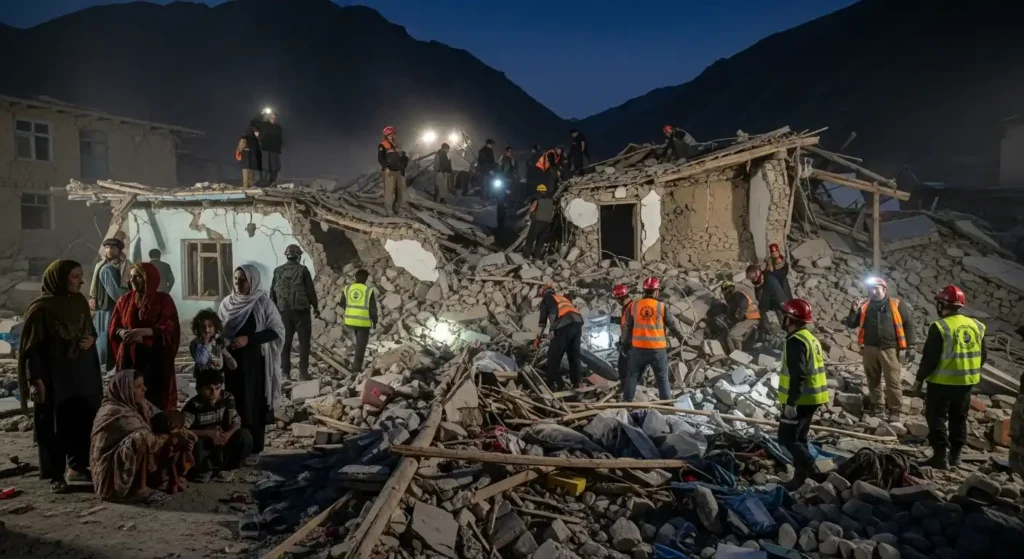A powerful 6.0-magnitude earthquake late Monday night devastated eastern Afghanistan, killing at least 800 people and leaving thousands injured. The tremor, which struck Kunar province near the Pakistan border, flattened mud-brick homes and sent people fleeing into the night.
The US Geological Survey reported that the quake hit at 11:47 pm local time (1917 GMT), about 27 km east-northeast of Jalalabad, a city of nearly 200,000 people. The shallow quake — only 8–10 km deep — was followed by three aftershocks, further worsening the destruction.
Worst-Hit Areas
According to officials, the worst devastation was reported in Kunar province, while at least nine deaths were confirmed in Nangarhar. The tremors were felt across multiple districts including Nur Gul, Soki, Watpur, Manogi, and Chapadare.
Sediqullah Quraishi Badloon, communications official for Nangarhar, confirmed widespread damage:
“The number of casualties and injuries is high, but since the area is difficult to access, our teams are still on site.”
Rescue Operations Underway
Health minister Sharafat Zaman said rescue teams were still trying to reach remote mountainous areas where homes had collapsed. Najibullah Hanif, provincial information head in Kunar, added that hundreds of injured have been taken to hospitals, but the numbers are expected to rise sharply.
Authorities confirmed several children were among the dead after roofs collapsed on their homes.
Tremors Felt in Pakistan
The quake shook buildings for several seconds in Jalalabad and surrounding towns, with tremors felt as far away as Islamabad, nearly 370 km from the epicenter, AFP reported.
Afghanistan’s Earthquake Vulnerability
Afghanistan lies at the junction of the Eurasian and Indian tectonic plates, particularly near the seismic hotspot of the Hindu Kush mountains. This makes it highly prone to powerful earthquakes.
With much of the population living in fragile mud and stone homes, even moderate tremors can cause massive casualties. Decades of conflict and underdevelopment have left Afghanistan with limited resources for disaster response, making recovery from such quakes extremely difficult.
Rescue workers are racing against time to pull survivors from the rubble in hard-to-reach districts. Officials fear the death toll could rise further as communication improves from remote quake-hit areas.





